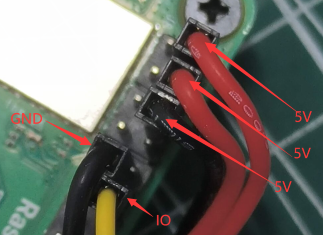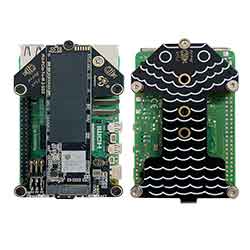- sales/support
Google Chat: zj734465502@gmail.com
- sales
+86-0755-88291180
- sales01
sales@spotpear.com
- sales02
dragon_manager@163.com
- support
tech-support@spotpear.com
- CEO-Complaints
zhoujie@spotpear.com
- sales/support
WhatsApp:13246739196
Pi5-PCIe-Fish-Board-A User Guide
Step 1 Enabling PCIe】
By default the PCIe connector is not enabled. To enable it you should add the following option into /boot/firmware/config.txt and reboot:
# Enable the PCIe External connector.
dtparam=pciex1
A more memorable alias for pciex1 exists, so you can alternatively add dtparam=nvme to the /boot/firmware/config.txt file.
NOTE
Enumeration of PCIe devices behind a switch is not currently supported.
Step 2 PCIe Gen 3.0】
The connection is certified for Gen 2.0 speeds (5 GT/sec), but you can force it to Gen 3.0 (10 GT/sec) if you add the following lines to your /boot/firmware/config.txt.
# Enable the PCIe external connector
dtparam=pciex1
# Force Gen 3.0 speeds
dtparam=pciex1_gen=3
WARNING
The Raspberry Pi 5 is not certified for Gen 3.0 speeds, and connections to PCIe devices at these speeds may be unstable.
You should then reboot your Raspberry Pi for these settings to take effect.
Step 3 Booting from PCIe】
Once enabled, and after you reboot, an NVMe disk attached via the PCIe should be visible. However, your Raspberry Pi won’t try to boot off the NVMe drive. If you wish to enable boot support you will need to change the BOOT_ORDER in the bootloader configuration. Edit the EEPROM configuration by,
sudo rpi-eeprom-config --edit
and change the BOOT_ORDER line to be as below.
BOOT_ORDER=0xf416
after saving your changes, reboot your Raspberry Pi to update the EEPROM.
NOTE】
Your Raspberry Pi will not boot from an attached NVMe drive unless you have the external PCIe port enabledd, and there’s a NVMe drive with a valid boot partition attached to the PCIe bus.
Step 4 Control the on-board LED and Extra Power】
Note: This step is not necessary. The module can work normally without these connections
Connect as the following picture

RUN LED-code
Note: This step is not necessary. The module can work normally without these connections
Connect as the following picture

RUN LED-code
TAG:
RV1106
Raspberry Pi 5 5V5A
Raspberry Pi 5 5V5A Power
Arduino Thermal imaging camera
Magnetic Encoder Servo Motor 35KG.CM 24V 360° RS485 High Precision And Large Torque RSBL35-24-HS
ESP32-P4 Smart 86 TV Box Development Board 4 inch 720x720 Display TouchScreen RS485 Relay Camera RJ45 ETH
USB CAN Analyzer
i7-1165G7
USB to JTAG
Template: Pico-get-start
Jetson Orin
Milk-V Duo S Usage of USB Type A interface
Spotpear
ESP32 UART USB Bus Servo ST RSBL Driver board For Raspberry PI Robot
Raspberry Pi 5 Fan
Sipeed NanoCluster Mini Cluster Board mini data center For Raspberry Pi CM45 / Computer /LM3H /M4N
STM32 0.96inch RGB OLED
EVAL-ADXL354CZ
Raspberry Pi 5 UPS HAT E 4-Port For 21700-Li-Battery (NOT includ) 5V6A Uninterruptible Power Supply
E-Paper
TAG:
D-Robotics RDK X3
USB TO RS485
High Performance AI at the Edge
Raspberry Pi 5
ESP32-S3 0.85inch LCD
Gyroscope
ESP32-C6 AI Voice Chat Robot For Xiaozhi 1.8 inch AMOLED Development Board 1.8inch TouchScreen Deepseek
TTL To CAN Mini
Raspberry Pi 5 PCIe to NVMe
ESP32 C3 Round LCD Electronic EYE 0.71 inch Display Watch Screen GC9D01 160x160
Raspberry Pi 4 Sound Card
Weather ornaments
Raspberry Pi Autofocus Camera
14 inch LCD 2K Type C HDMI Capacitive Touchscreen Display Raspberry Pi Jetson Nano mini PC 2160x1440
Providing Effective Interference Shielding
LuckFox Pico
Industrial UART USB 4CH Serial Converter FT4232HL RS232/485/422/TTL
Raspberry Pi Global Shutter Camera 1.6MP Sony IMX296 Monochrome
Rotary screen
ESP32 S3 LCD Development Board 1.3 inch Display




